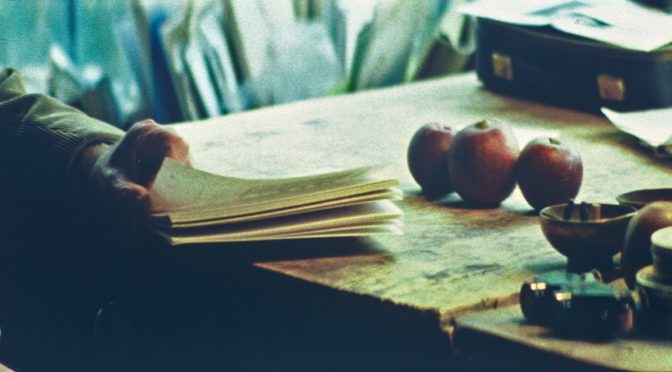This is the preliminary programme. Updates and minor changes will follow.

- This event has passed.
Session 2 – Pensive Images 1
December 13, 2019 – 9:31 am – 11:00 am
Hanneke Grootenboer
Sebald’s Pensive Images
The starting point for this paper is the question as to what images in Sebald’s works actually ‘do’ to us, as readers. To what extent do they interrupt—or accelerate—the flow of the text, and what are the effects of their intervention on the reader? What exactly happens in the interval when our eyes stop reading and start looking? Is the transition from text to image an interval, or rather a continuation, a kind of montage that weaves the stillness of the reproduction with the other poetic images his text evokes?
I argue that Sebald’s pictures are pensive images that offer us a thought in addition to a meaning of an aspect of a narrative. This paper will explore the notion of pensiveness by looking at recent debates, in film and media studies, on the role and function of the still image or the freeze-frame in time-based media. Works by Fiona Tan, Tacita Dean and David Claerbout have not only been at the heart of these debates, but offer specific theories on how the appearance of stillness within motion generates a thought-effect that draws the viewer in. I am particularly interested in the notion of the ‘pensive spectator’, coined by film scholars Raymond Bellour and Laura Mulvey, and how it might translate to Sebald’s works. I will also address Roland Barthes’ (and Ranciere’s) notion of the pensive image as applicable to literature, that they understand as vignettes or ‘pictures’ emerging from a novel’s text that cut through its narrative and semiotic flow as if it were freeze frames.
Hanneke Grootenboer is since September 2019 Professor of the History of Art at Radboud University at Nijmegen. Before that, she was Professor of the History of Art at the University of Oxford. Her object-oriented and theoretically informed research critically engages on the intersection of visual culture, literature, philosophy and material culture. She is author of The Rhetoric of Perspective: Realism and Illusionism in Seventeenth-century Dutch Still Life, and Treasuring the Gaze: Intimate Vision in Late-Eighteenth-Century British Eye Miniatures, both published by the University of Chicago Press, and the recipient of several awards including from the Leverhulm Trust, the Getty Foundation, the Clark Art Institute. From 2014-16 she served as the Head of the Ruskin School of Art at Oxford and in 2016-17, she was a full-year fellow at NIAS. Her next book, forthcoming from the University of Chicago Press, entitled The Pensive Image: Art as a Form of Thinking argues that painting is shaping thought.
(This paper has inspired the session’s title.)
Sophie Knezic
Words That Pull: Felix Gonzalez-Torres’ Textual Mnemonics
In a letter to the collector Robert Vifian, the late Cuban-American artist Felix Gonzalez-Torres explained the reason for the text-based nature of his portrait series – of which “Untitled” (Portrait of Robert Vifian), (1993) was one – writing, ‘Everyimage in culture only exists within language. I, then, in these portraits, go the other way around: I give the viewer a very coded word, image, moment, and I hope the viewer will be able to provide then an “image”.’ Gonzales-Torres further elaborated his position on the pivotal link between textuality and memory by adding, ‘We are not what we think we are, but rather a compilation of texts. A compilation of histories, past, present, and future, always shifting, adding, subtracting, gaining.’
This paper focuses on Gonzalez-Torres’ Untitled” Portraits and “Untitled” Billboards series: two bodies of work that commemorated subjects and events through the eschewal of pictorial representation and the substitution of image by text. This logic of displacement is explored in light of Jacques Derrida’s deconstructionist metaphysics, in particular his concepts of pharmakon, anamnesis and the process of writing itself. These ideas will be interrelated with Brian Massumi’s theory of affect and Walter Benjamin’s view of historical materialism in order to mount a claim that substitutive logics and irresolution between absence and presence constitute necessary conditions to unleash the future-oriented potential of mnemonic acts.
Sophie Knezic is a writer, academic and visual artist who works between practice and theory. Her research specialisms include the aesthetics and metaphysics of transparency, immaterialism, spectrality, temporality, memory, humour and sound.
Her research is conducted across art history, art theory, visual culture, literary fiction, science fiction and the post-humanities, with a particular focus on the interdisciplinary dialogue between Continental philosophy and Post-conceptual practices in contemporary art.
Sophie’s critical writing has been published in journals including Broadsheet Journal, Evental Aesthetics: An Independent Journal of Philosophy, and Invisible Culture: An Electronic Journal for Visual Culture, and she is a regular contributor to Frieze, Memo Review, Art Monthly Australasia and Australian Book Review. Sophie currently lectures in the Critical and Theoretical Studies Dept at VCA, the University of Melbourne and in the Art History and Theory Dept at the School of Art, RMIT University.
Arts. He has worked at the Centre since 2006 after a period of 10 years at Tate. He has curated and co-curated exhibitions concerning Bill Viola, Thomas Houseago, John Hedgecoe, Francis Bacon, Alberto Giacometti, Antony Gormley, Rana Begum, Elisabeth Frink and W.G. Sebald. He has a specialist interest in 20th Century as well as contemporary art and is spearheading the plans to create a sculpture park at the Sainsbury Centre.
